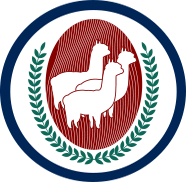Alpaca Information Centre

The Alpaca Information Centre is based at Banksia Park and is owned by George and Jenny. It provides information to all levels of the alpaca industry from the novice beginner to the most experienced alpaca breeder.
Murdoch University directs veterinary students with an interest in alpacas to the farm for practical farm experience. This can include living on the farm for one week. Students participate in the full operation of the farm and gain valuable insights into the commercial world of alpaca farming.
We also have research agreements with the University of WA to enable alpaca based research for their honours & PHD students.
We have had numerous International students mainly from France and Germany come and stay for an extended period as part of their Animal Studies.
Over the years the Alpaca Information Centre has operated many workshops and conducted seminars for the benefit of the alpaca industries in Australia, Canada, New Zealand, South Africa and England & Germany. These workshops frequently involve practical demonstrations and new entrants to the industry find them most informative.
Workshop topics have included:
- An introduction to the Australian Alpaca Industry.
- Practical Nutrition & Seasonal Breeding.
- Birthing & Neonatal Care.
- A Year in the Life of an Alpaca.
- Show Preparation of Alpacas.
- Management of Heat Stress in Alpacas.
- Fibre Assessment Workshops.
- Show Ring Etiquette.
- Introduction to Alpaca Reproduction.
- Alpaca Reproduction – common mistakes.
If you are interested in attending any of these workshops please register by emailing us.
We have included some basic alpaca industry information here for you.

Basic Alpaca Facts
- Alpacas are shorn once a year in spring, they have a lifespan of 15-20 years.
- Males reach maturity and breed at approximately 2.5 years and females at 12-15 months.
- Alpacas are easily cared for and are free from the scourges that affect sheep ie. fly strike and footrot problems.They are easy to handle, halter train and transport; conventional sheep fencing is more than adequate.
- Alpacas are also useful as herd protectors for other livestock, many alpacas wethers have found a job protecting sheep and goats at lambing and kidding from fox attack. Female alpacas are pregnant for 11 to 11.5 months, birthing is generally trouble free and in daylight hours. Multiple pregnancies are rare, females are usually re-mated 2-3 weeks after giving birth. Babies are called “cria” and usually weigh 6-8 kg at birth.
History of alpacas in Australia
Alpacas were originally imported from Chile with more recent imports from the USA and Peru. The Australian herd has grown to some 110,000 registered animals, with approximately 11,000 in Western Australia, the largest herd of alpacas outside of South America.
Huacaya & Suri
The alpaca comes in two distinct breeds, the more common huacaya with a sheep style of fleece and the suri with a fleece that hangs in pencil-like dreadlocks.
Health Status
Western Australia is considered a “JD free zone” and as such has free movement of alpacas within the state. Western Australian alpacas are free to enter any other state in Australia or can be exported to International breeders.
Co-op & Elite Fibre & AAFL
Initially a grower based fibre Co-op was well placed to take the whole Australian alpaca clip and with processing through the Elite Fibre Co was able to produce value added quality Australian made products for sale in the local Australian market and overseas. This processing has more recently been taken over by a new Company structure the Australian Alpaca Fleece Ltd (AAFL) This continues to grow & promote the alpaca fibre to the International community.
The Fibre
The fibre comes in 22 recognised colours and ranges from pure white to chocolate brown, light silver to warm rose grey and true jet black. Alpaca wool is soft, light weight and warm and has a softer handle and higher tensile strength than sheep wool.
